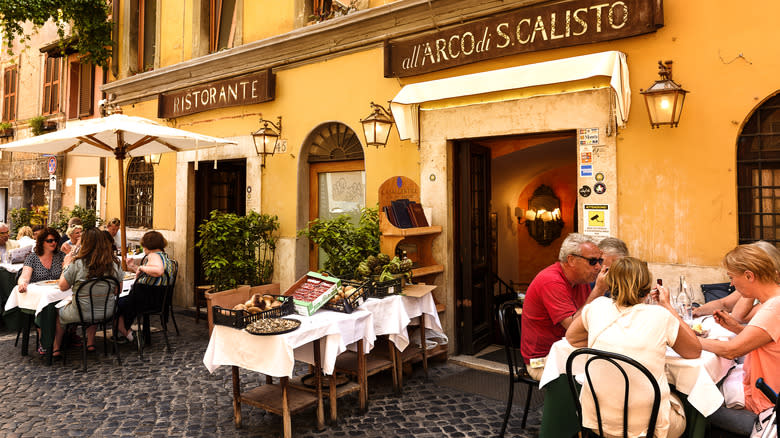
For first time visitors, dining in Italy can prove confusing. Even if you understand the language, you’ll want to research national traditions, such as aperitivo: Italy’s version of the happy hour. Likewise, impatient Americans will have to adapt to Italy’s slow-paced, often hours-long dinners that are an experience as much as they are a meal. Yet one of the most confusing aspects of Italian dining comes at the end of a sit-down lunch or dinner. When the waiter drops off the check, you may notice a few extra euros filed under a hidden — but expected — dining cost.
That charge — known as the the coperto — refers to a general cover charge that is charged per person for a meal. The word, quite literally, translates to “covered,” and the sum doesn’t account for any one part of the meal. Rather, it’s a blanket charge that accounts for various table-related aspects that include everything from your individual place setting to the basket of bread to even the tablecloth itself. (Sometimes, however, a bill may distinguish the bread charge as pane e coperto, but the general idea is the same.)
While a charge merely for sitting at a table may seem like an unnecessary expense, the coperto typically doesn’t amount to more than a few euros. Since tipping is an uncommon practice in Italy, the coperto is also meant to help the restaurant cover the waitstaff’s regular wages.
Read more: 44 Types Of Pasta And When You Should Be Using Them
Coperto Replaces The Need To Tip After A Sit-Down Meal

Traveling Americans may find that the added euros actually enhance the dining experience since it makes paying for a meal straightforward. While a waitperson in a touristy spot may not say boo to good money, in some places, they won’t even accept a tip. And, because it’s charged per person, the coperto can ease the process of splitting a bill among a group. The coperto charge is uniform for everyone, regardless of what you ate.
Given the formality of Italian lunches and dinners, the coperto most often applies to those two meals, when enjoyed sitting down. However, a morning coffee break isn’t immune from added costs, either. If you order your espresso or cappuccino at a cafe bar — and drink a beverage while standing — you’ll pay for just the coffee. This is, in fact, what most Italians do.
However, if you choose to sit down to sip or snack, you may have to pay breakfast’s coperto equivalent. That may come in the form of an “al tavalo” — table — charge, depending on the cafe in question. Basically, your espresso will come at a slightly higher sticker price than that same coffee ordered at the bar. Like the coperto, however, the extra fee shouldn’t amount to much — and is often well worth it. What’s a cover charge to a slow morning sipping a cappuccino, or a leisurely evening of pasta and prosecco al fresco?
Read the original article on Tasting Table
EMEA Tribune is not involved in this news article, it is taken from our partners and or from the News Agencies. Copyright and Credit go to the News Agencies, email news@emeatribune.com Follow our WhatsApp verified Channel









